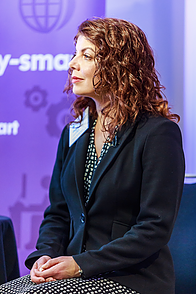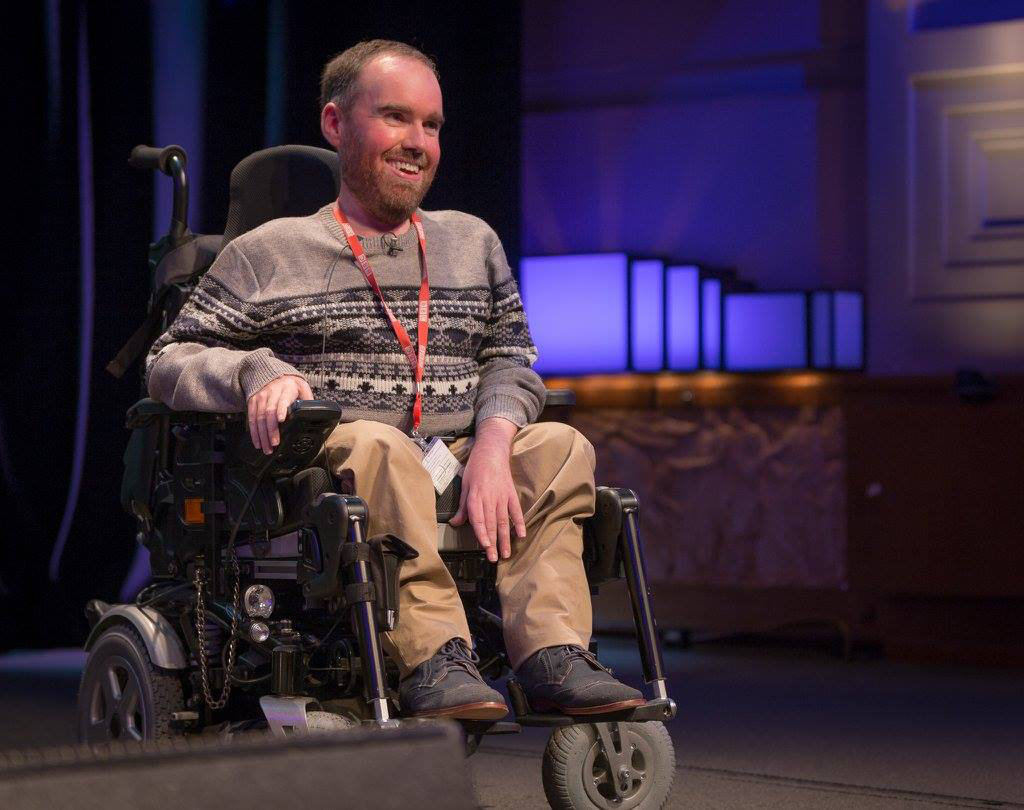Ahead of her talk at Diversity in Technology on the 24th May, we sat down with Diane Lightfoot, CEO of Business Disability Forum, to talk about the challenges of the accessible workplace movement, and the importance of increasing accessibility within the product development process.
What is the Business Disability Forum and what drives your passion to champion the inclusion of disabled people in the workplace?
I have been working in the disability field for 14 years and during that time, I have seen first-hand the hugely transformative effect that work – good work – can have on disabled people’s lives.
Before joining Business Disability Forum, I spent 13 years at another national charity, United Response, which works primarily with adults and young people with learning disabilities, autism and enduring mental health conditions.
“It was one of the major highlights of my job to see people’s lives completely changed as a result of getting a job for the first time.”
And it wasn’t just about the money but about the confidence, self-esteem and belonging that comes with it.
Our identity is so intrinsically linked with our job – “what do you do?” is inevitably one of the first questions that gets asked when we meet someone new, whether it’s in the pub or at a wedding. And yet there are still far too many people for whom that identity is far from a reality.
So, the role at Business Disability Forum and the opportunity to work directly with businesses – businesses that really “get it” and to really champion this agenda, is something that is very dear to my heart. Though it’s not just about the heart but the head too!
“We know that diverse workforces are more productive, reduce “group think” and bring in a wider skill set from accessing a broader talent pool – so it makes good business sense too.”
So, why do you think technology companies should put greater emphasis on accessibility within the product development process?
When we don’t consider accessibility, some people are simply blocked out from content that we put together and experiences that we’re building.
What’s the point of designing it if we aren’t designing for as many people as we can?
“Designing for accessibility may be the only way some people can experience what you’ve built.”
If you consider there are 11 million people in the UK alone with a long-term illness, health condition or disability, if you don’t consider making your products accessible to them, you are potentially not allowing them access to your product.
The disability or “purple” pound is estimated to be worth £249 Billion annually in the UK alone and who wants to lose out on that market?
Plus, more organisations are insisting on accessibility in their requirements, so it will become more difficult to not make your technology accessible.
“We also know that building in accessibility right from the beginning is much more cost effective than trying to “retro fit” later on.”
And, whilst accessibility and usability are different things, there is definitely a sweet spot in the middle! So, what works for disabled people will often be better for everyone else too.
In your opinion, what is the greatest challenge facing the accessible workplace technology movement?
There is a lot of assistive technology that is brilliant in removing barriers for disabled people in the workplace. Often this is simply about enabling disabled people to work.
But we would like to get to a place where assistive technology was considered mainstream, where it just worked with the corporate systems, and allowed disabled people to access information the same as everyone else.
“If accessibility and inclusive design, with user testing by disabled people, is built in throughout, we wouldn’t need to wait until rollout to know there is a problem.”
As an example, we are aware of organisations that have implemented new corporate wide systems, without considering their disabled and blind colleagues.
I’m sure this wasn’t deliberate exclusion but it meant, in this example, that their voice activated software did not work with the new system and so they were unable to do their jobs.
This could have been completely avoided by including disabled people in the design process.
There is also the issue of legacy systems (old systems), but that’s another story!
What advice would you offer technology providers who are interested in developing or expanding an accessibility initiative?
“Get accessibility on your radar! If you consider it from the onset, the costs will be minimal and you’ll end up with a much better product.”
Make accessibility a mainstream part of your process for procuring and specifying a new product.
Would you start a technology project without considering security? So why don’t we consider accessibility? There are lots of great tools and resources out there to support you and a passionate community who want to spread the word.
Business Disability Forum’s own Technology Taskforce has created over 50 guides and case studies to help you get started and which are openly available to anyone to access. You can find them on our website
Finally, how do you inspire the next generation and help them to understand the importance of removing barriers between public and private organisations and disabled people?
“I think that we need to raise awareness of disability generally and the profile of disabled people in the workplace and in wider society.”
The wheelchair symbol for disability, whilst widely recognised, is something of a misnomer.
“Whilst we haven’t “cracked it” in terms of physical disability, it’s important to remember that some 96% of all disabilities are not visible and that some 18% of people of working age have a disability or long-term condition.”
That figure rises to 30% of older people, with the average age of acquiring a disability being 53.
So, it’s not about “them”, it’s about “us” and something that does and will affect all of us.
And if the next generation are working for Disability Smart organisations that are already seeing the benefits of making their technology accessible, then hopefully it will become embedded into their programming.
They will become the advocates of the future and will include accessibility as a matter of course. There are 11 million people depending on them.









